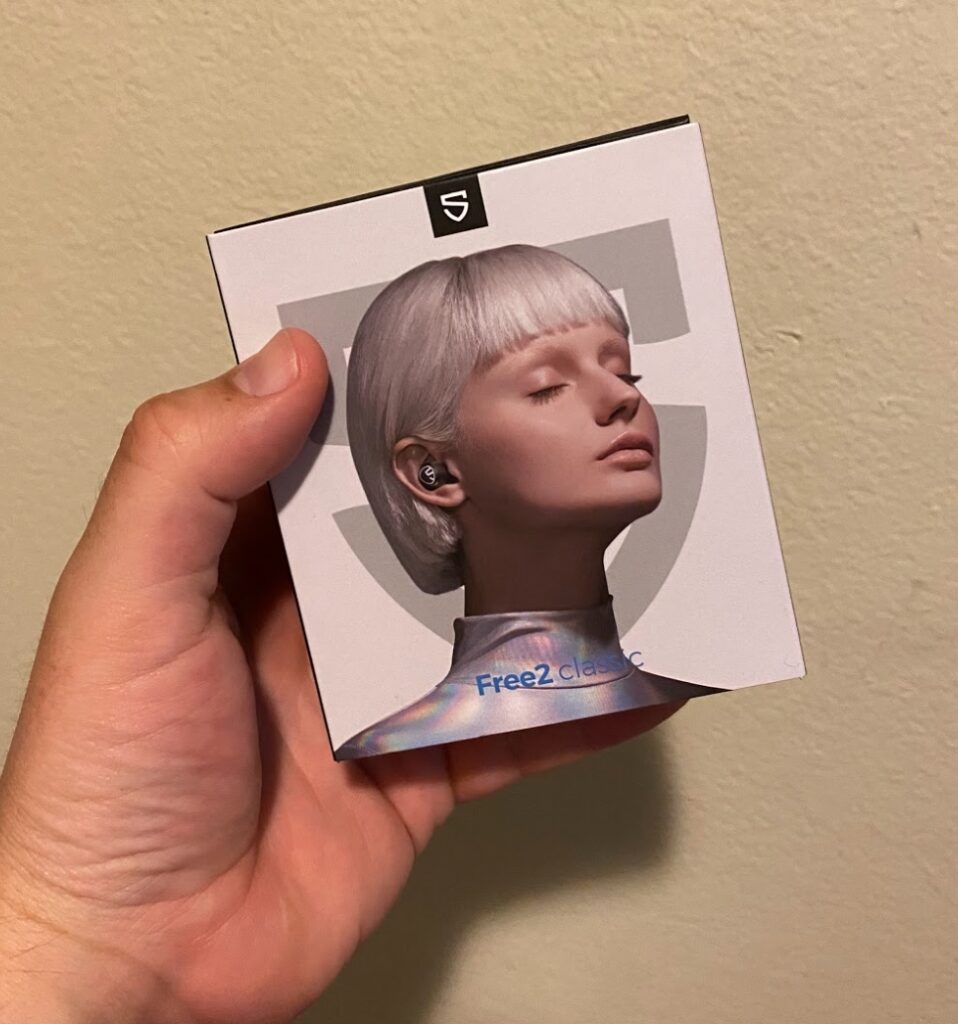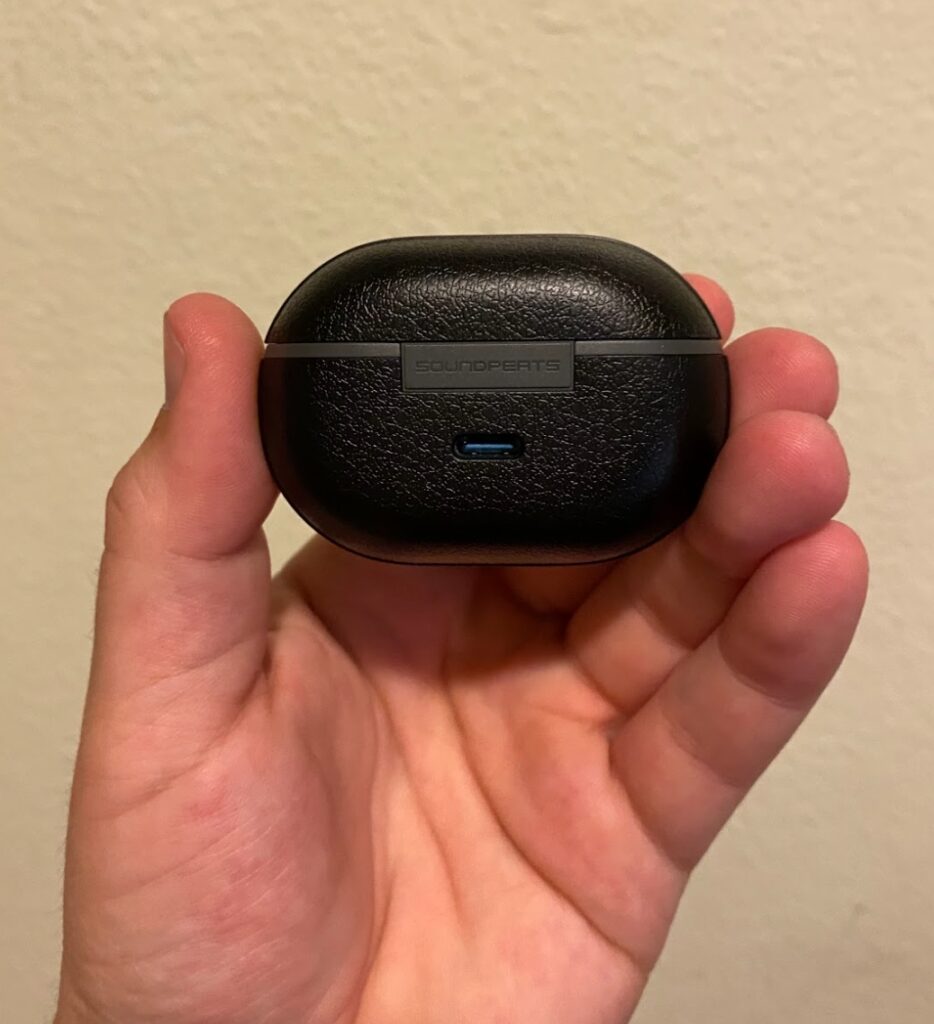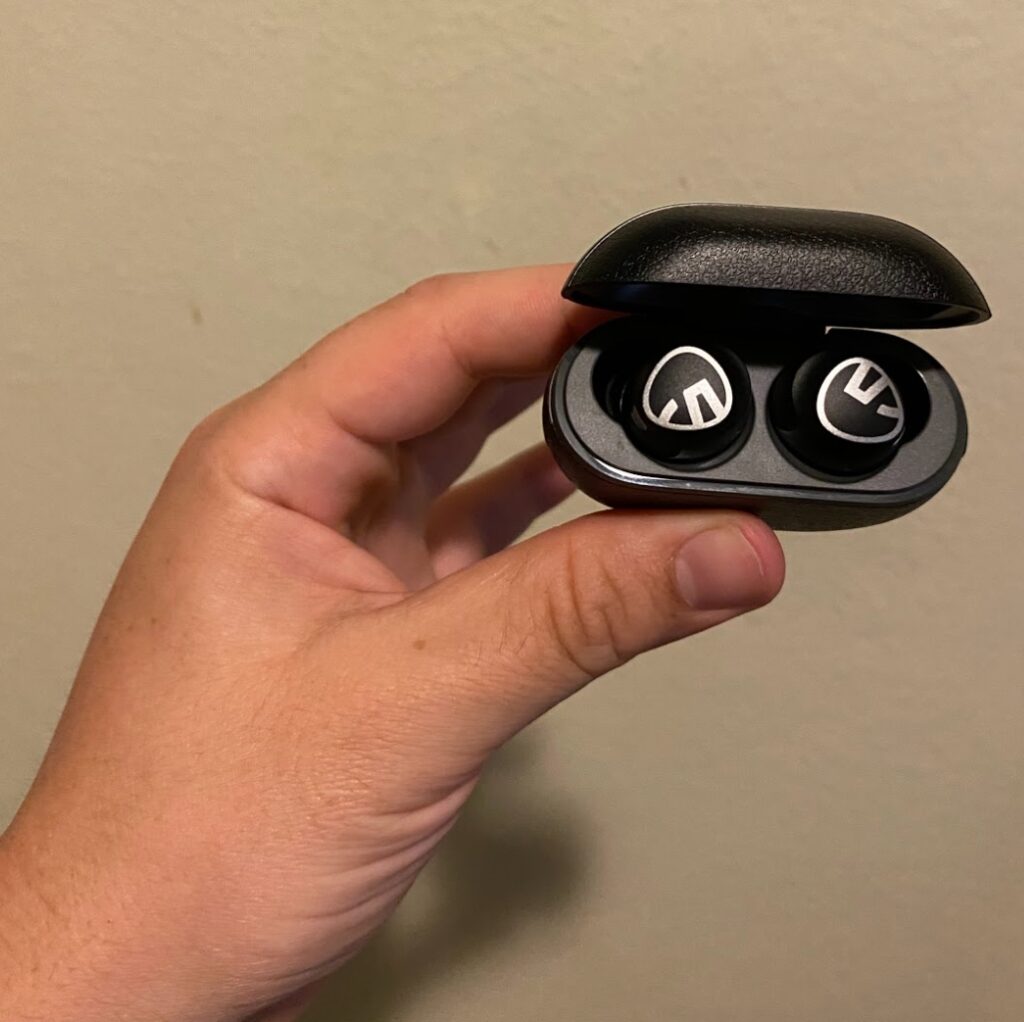Soundpeats Free2 Classic Review
Soundpeats are a lesser-known brand of earbud manufacturers, but their products are surprisingly functional and affordable. If you’re familiar with Ray-Cons or Airpods, you should have an easy time getting accustomed to their Free2 Classic wireless earbuds— but is it worth it to make the switch?
Check out our Soundpeats Free2 Classic review to learn more:
Soundpeats Free2 Classic Unboxing

The Free2 Classic wireless earbuds come in a small box with a few accessories. These include a 7-inch USB-C charging cable, which is designed to connect to the charging case, and a few extra ear tips that come in larger and smaller sizes. It would have been nice to include an outlet adaptor with the cable, but you can use an Apple outlet adaptor or a generic wall adaptor from Amazon if you have one.

In addition to the USB-C charging port, the Free2 Classic’s case has a plastic shell with a faux leather pattern and uses a soft magnetic seal to keep the case lid closed when not in use. It’s more scratch-resistant than the Airpods charging case, but the fake leather pattern on plastic feels really cheap. For comparison, the similarly designed Soundpeats Mini Pro has a much nicer feel to its matte black case.

There’s a slight magnetic pull to the slots for each bud, which makes it easier to reattach them once you’re done listening. A light on the front of each bud turns white when powered on, blinks when pairing, and turns red when charging in the case. Unfortunately, it can be hard to see the minuscule indicators of left or right for each bud, which can be annoying when putting the Free 2 Classic buds in your ears.
I experienced some slight jaw discomfort after an hour of use, so I switched to smaller ear tips. These were surprisingly difficult to replace, although you may have an easier time if you don’t have big sausage fingers like mine. Unfortunately, I still felt uncomfortable after an hour with the smaller tips, but it did help a little.
Soundpeats Free2 Classic Features
The Soundpeats Free2 Classic uses Bluetooth 5.1 to connect, and it paired quickly to my iPhone and Nintendo Switch. According to the paper manual included in the box, there are several commands you can perform by tapping or holding either bud, but I spent the most time fiddling with the volume— it takes a single tap on the left to decrease, and a single tap on the right to increase. It was also able to disconnect and reconnect between two devices easily and with no conflicts. However, I noticed that it took a bit longer to connect to the switch in docked mode versus handheld mode— after about ten seconds from when the voice assistant told me the device was connected, I started to hear audio from my Switch.
One of the most impressive features of these earbuds is its great battery life. Soundpeats advertises that the Free2 Classic can play audio for up to 8 hours on a single charge, and you can charge it almost 3 full times with a fully juiced charging case. In standby mode, they claim it has a battery life of roughly 30 hours, but I noticed these earbuds would still connect and play audio instantly after a week without being charged. You can conceivably use these earbuds for a few hours a day over a week without needing to charge them, and it only takes about an hour and a half before the case is topped off and ready to resume playing.
Noise reduction is also impressive, even though there’s no built-in software to accomplish this. Thanks to the fact that these are in-ear headphones, there’s a natural noise isolation effect when the cups are fully inserted into your ear canal. This made it so I could clearly hear audio over a loud fan, running water, and wind.
Soundpeats Free2 Classic Audio Quality
Now for the most important question— how does the Soundpeats Free2 Classic sound when playing video games? I tried several to get an idea of the overall sound quality for these earbuds.
- On the SNES emulator included with Nintendo Switch Online, Earthbound sounds amazing. If you play this game with these earbuds, I recommend turning on the stereo effect in order to fully experience the mind-bending soundtrack— the mid tones in the SNES synths are perfect for these earbuds, and the in-game sound effects have lots of punch.
- Unfortunately, The Legend of Zelda: Link to the Past sounds bad in comparison. The rupee pickup noise in particular is grating and sounds like the audio is clipping. This noise has never been particularly pleasant for me when emulating this title on PC, GBA, or Switch, which may be because of the game’s mixing; that being said, these earbuds aren’t doing it any favors.
- Super Mario 64 sounds decent, with the stereo audio in full effect. The different virtual instruments that make up the game’s classic score sound clear, with notable bass and hi hats in the theme for Bob-Omb Battlefield. Mario’s voice sounds less impressive, although that has a lot to do with the bitcrushed original game audio— maybe playing the recent remaster would sound better.

Retro games aside, I decided to try a few modern titles to see how these headphones hold up:
- Crypt of the Necrodancer is a perfect test because it uses retro soundscapes alongside higher latency narration and voice acting. It also has an in-game latency tester, which allowed me to judge the connection speed for these wireless earbuds. After a few tests, the game said that the Free2 Classic’s audio latency was between 0 and 181ms in handheld mode, and between 45 and 128ms in docked mode. The music sounds great, but the voice acting sounded flat although very clear.
- My final test game was Rayman Legends, which sounds beautiful. Every instrument in the score shines through, with no noticeable issues when listening through these earbuds. That being said, the low end is clearly lacking in order to accommodate clearer mids and highs.
General Sound Quality
After trying out some games, I paired these earbuds to my iPhone and tried listening to some other stuff to determine the general sound quality.
- While listening to a podcast, I noticed that the audio quality was noticeably bad. Again, the vocals for all speakers were clear, but there’s virtually no low end to speak of. Additionally, echoes and other room noise was present even when using Overcast’s voice boost feature, which I mostly attribute to the clear emphasis on delivering audio in the middle of the spectrum.
- I switched over to Spotify and listened to some different genres of music. When listening to hip-hop, the vocals were clear but the beats and backing instruments were unimpressive, which detracted from the experience. This was less noticeable when listening to heavy metal and acoustic rock, and I could still clearly hear low end instruments like trombones and bass in an ensemble with higher-pitched string and wood instruments. Ambient electronica also sounded clear and robust, but faster and more intense electronic music with lots of layered synths started to strain these earbuds and become somewhat muddy.
- Finally, I recorded a few voice memos to test the built-in mic for taking calls and giving voice commands. I didn’t expect much, but I was impressed at how far away I could move from my phone while still recording stable audio for the memo. However, the mic isn’t very sensitive and has a tough time picking up your speaking voice if it’s too soft. Overally, you can expect about the same vocal quality as the built-in mic for a laptop or cheap USB webcam.
Final Recommendation
At the end of the day, the Soundpeats Free2 Classic are perfectly passable for listening to game audio and music with minimal intensity. They have an excellent battery life that makes these painless for casual use, especially if you like to travel with a Nintendo Switch or Bluetooth-supported portable gaming device.
But if you’re an audiophile, a hip-hop head, or a stickler for audio quality in your podcast listening experience, these would be a poor fit for your delicate sensibilities. In these cases, I would recommend the Soundpeats Mini Pro instead, since they offer a more robust sound profile with better low end for a modest price increase.
